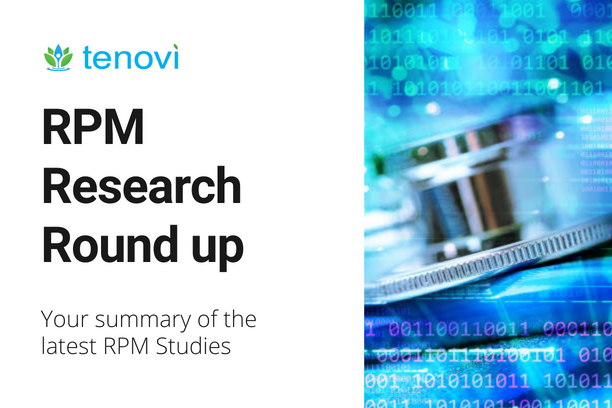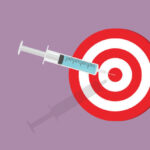Remote patient monitoring (RPM) for patients is a powerful tool to enhance care delivery and improve the overall patient experience. This week, 3 newly published studies shed light on the promising potential of remote patient monitoring in managing chronic kidney disease, febrile neutropenia, and hypertensive pregnancy. These studies highlight how RPM addresses access barriers and boosts patient satisfaction and quality of life.
Remote Patient Monitoring for Patients with Kidney Disease
A study published in the journal Cureus has underscored the benefits of remote patient monitoring for patients with chronic kidney disease (CKD) and those receiving dialysis treatment. With the rising global prevalence of end-stage kidney disease, driven by increasing risk factors like diabetes, hypertension, and obesity, healthcare systems face significant challenges in providing consistent and affordable care. RPM offers a solution to overcome these obstacles by:
- Enhancing Patient Convenience: RPM enables remote monitoring for patients receiving dialysis at home or in a clinic setting, reducing the need for frequent in-person visits and long travel, which can be burdensome.
- Improving Follow-Up: Video consultations facilitate regular follow-ups, allowing clinicians to monitor patients’ conditions, provide guidance, and ensure adherence to treatment plans properly. Studies cited in the research show this can reduce dropouts.
- Boosting Patient Experience: The ability to receive care seamlessly from home in a comfortable environment improves the overall care experience for patients, enhancing their confidence, empowerment, independence, and quality of life. Multiple studies cited found telemedicine boosted these factors for those on dialysis.
- Increasing Satisfaction: By increasing access, reducing travel burden, allowing multimedia consultation, and enabling consistent follow-ups, RPM has been shown to drive higher patient satisfaction with their kidney disease care in the studies analyzed.
The costs per patient for those with CKD stages 4 and 5 range from $5367 to $53,186, and for those with ESKD requiring dialysis, the costs range from $20,110 to $100,593. While limited data is available on the economic benefits, the study suggests RPM can potentially reduce healthcare utilization costs related to dialysis care over the long term.
Remote Patient Monitoring for Febrile Neutropenia
Another area where remote monitoring makes inroads is managing febrile neutropenia (FN). Febrile neutropenia is a common and costly complication experienced by cancer patients undergoing treatment. Though guidelines recommend outpatient management for low-risk FN cases to reduce patient burden, inpatient treatment remains the norm in the U.S. due to a lack of safe alternatives.
A new study published in NEJM Catalyst describes the promising results of remote patient monitoring for patients with neutropenia. One cancer center implemented an RPM program called DEFeNDR (Decreasing the burden of Febrile Neutropenia through Dynamic RPM). The program provided eligible hospitalized FN patients with a tablet and connected devices to monitor vital signs and symptoms at home for 30 days post-discharge.
Patient data was integrated into the EHR in near real-time, with virtual nurses monitoring for adverse trends and facilitating care through pre-defined pathways, alleviating the burden on the primary oncology team.
Key outcomes of the innovative DEFeNDR program included:
- A significantly lower percentage of days spent inpatient within 30 days for the RPM group (5.1%) compared to non-participants (12.4%).
- Fewer total inpatient days on average for the RPM group.
- A trend toward a lower 30-day readmission rate for the RPM group.
- Crucially, 100% of surveyed RPM patients said they would recommend the program, highlighting high patient satisfaction.
The study demonstrates how RPM can be an effective and patient-satisfying model for safely managing complex treatment complications like febrile neutropenia in an outpatient setting. Amid a broader shift toward more ambulatory cancer care, such RPM programs could help improve quality of life while reducing healthcare utilization and costs.
Remote Patient Monitoring in Hypertensive Pregnancy
A new study published in the Cardiovascular Digital Health Journal has highlighted the use of RPM in managing hypertensive disorders during pregnancy. Hypertension in pregnancy is associated with increased risks of complications like pre-eclampsia, fetal growth restriction, preterm delivery, and low birth weight, disproportionately affecting minority and rural women.
The study evaluated an integrated care model utilizing cellular-enabled RPM devices and a 24/7 nurse call center to monitor blood pressure in hypertension-related pregnancies. Key findings included:
- Significant reduction in perceived stress levels after using the RPM device.
- High satisfaction with the device’s usability and strong intention to continue using it.
- Participants reported advantages like ease of use, perceived better care, increased BP monitoring, and empowerment in managing their health.
Relatively low rates of emergency department visits, hospitalizations, and calls to the nurse call center among RPM device users.
While some participants expressed concerns about inaccurate readings or excessive calls from the nurse call center, the overall feedback was positive. RPM facilitated closer hypertension monitoring, reduced healthcare access barriers, and showed the potential to improve maternal and neonatal outcomes.
Understanding Remote Patient Monitoring for Patients
These 3 studies from respected medical journals highlight the potential of remote patient monitoring for patients across three complex medical conditions. By addressing long-standing access barriers, enhancing convenience, and enabling consistent clinical follow-up, RPM has proven its ability to improve outcomes and boost crucial factors like patient satisfaction, empowerment, independence, and overall quality of life.
As healthcare systems face mounting costs and staffing shortages, embracing RPM could be one solution to provide more patient-centric, virtualized care that prioritizes positive experiences and outcomes. With RPM’s demonstrated impacts on reducing burden, preventing complications, and increasing satisfaction, broader adoption and reimbursement support will be critical to realizing its full potential to transform disease management for patients across the spectrum of acute and chronic illnesses.
Click here to subscribe to Tenovi’s Research Roundup newsletter, which provides weekly insights into the evolving landscape of remote health and remote patient monitoring.






